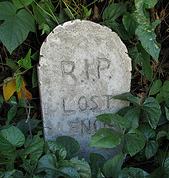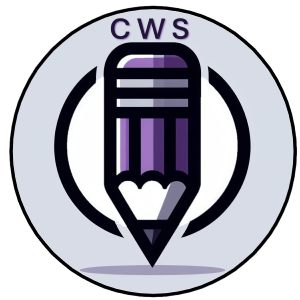 There have been cries about the death of the B2B brochure for a while now. I don’t know about you, but I still see B2B brochures. A lot of them.
There have been cries about the death of the B2B brochure for a while now. I don’t know about you, but I still see B2B brochures. A lot of them.
Turns out the web hasn’t killed brochures. It’s given companies a way to distribute them, and require personal information for the privilege of viewing them. So they are far from dead. And I can’t argue with marketers’ desire to hang onto them. Done well, brochures create value and help move customers through the sales cycle.
What does a well-done brochure look like? It’s a far cry from the PDF files that populate most company websites. You’ve seen the ones I mean. The brochure title is the product name. They begin with a paragraph about how wonderful the product is, how it fits into everything else the company offers, and ends with a list of highlighted features.
Now here’s the big question. Is that something you’d give personal information to read? Or want to read at all?
Didn’t think so.
The problem with most brochures is they start and end with the product. To create value and drive leads, B2B marketers need to rethink their approach to brochures.
Target ONE Ideal Buyer
Yes, I’m talking about buyer personas. And yes, you really do need them to create a “simple” brochure. If you don’t know who you are talking to, how can you get their attention? How can you win them over early in the game?
Surveys like this one by Eccolo Media show that’s when they’ll be reading those brochures. Before they come to you or want to speak to a sales person.
I can see the multiplication panic setting in already. What if you sell the product to three different personas? Then you want three different brochures focused on those particular buyers. Buyers are looking for problems and solutions that are specific to them. A brochure that tries to speak to everyone provides value to no one.
Focus on ONE Solution
Ditch the brochures that list every product and service you offer. No one cares about that. Instead, focus each brochure on a single product or service. That’s easy, you say. We already do that. Here’s the brochure for product A, B, and C.
Nope. That’s not what I mean.
Bring focus to the brochure through the reader you have targeted. How does the product or solution solve their problems? How can it make their life easier? What does a day in the life this professional look like when using your solution?
You get the idea. Once you know your reader, then you can focus on the problem and solution that is most important to them. That will tell you which product to talk about, and which of its features to focus on.
I know the brochure won’t be great reading for anyone else. And yes, there will be information that is left out. Remember, the point of the brochure isn’t to mention everything the buyer might need to know. It’s to generate interest so they’ll want to move further into the sales cycle with you.
Maximize Events
Don’t waste the opportunity events provide. This is exactly what B2B marketers do when they hand out a standard “overview” brochure to everyone who comes to their trade show booth.
Let’s say you are a training company attending a conference geared to HR professionals. At a minimum, make sure the hand-out brochure targets HR professionals. Better yet, target it to the conference too. Does the conference focus on a specific problem or market trend these professionals are facing? Use your brochure to show how you can help them solve that problem. Overcome the negative trend. Capitalize on a positive one.
Now your brochure doesn’t sound like all the others. By maximizing the opportunity the event provided, maybe yours will make it to the buyer’s office.
Rethink Your Headline
Copywriters and journalists agonize over headlines. And for good reason. A great headline can do a lot of the heavy lifting. It draws the eye and pulls the reader in. After all, if the brochure isn’t read, why create it at all?
Because headlines have such immense power, it pains me when I see “Product A” as the title of a brochure. What a waste. No one wants to read that unless:
- They already know who you are
- They already know what Product A is
- They want to know more about Product A
And guess what? The odds of any of those things happening are low. Your customers may know you and Product A, but your prospects don’t. If you think your brochures don’t do enough, the headline may be a big part of the problem.
Don’t waste the power of a headline on a product name. Talk about how you solve a problem. Provide a benefit. Drive value. Writing great headlines takes practice, but it is well worth the effort.
Use a Strong Call to Action
A good brochure is like a lunch date. It’s something you do because it’s short, non-committal, and can be used to gauge interest. Let’s say you’ve passed the lunch date inspection. The buyer has some interest and wants to move forward. Do you tell them how?
A shocking number of brochures have no call to action at all. Many more have a weak call to action that is confusing or vague. Don’t make that mistake.
Tell the reader what you want them to do next. Download a white paper? Read a case study? Call a salesperson? Be clear and specific about the next steps and what they can expect when they take them.
And as you craft your call to action, remember where you are in the sales cycle. You’ve been on a lunch date. If you tell them to call you and overwhelm them with a full-on sales assault, expect to lose some. After all it was just lunch, not a proposal.
I’d love to hear from you. What other tips can you share for improving a brochure? Any stories about the impact of a brochure makeover?
*Image courtesy of L. Marie

You should always be A/B Testing. This of course gives you twice as many brochures, but at the end of the day you figure out which one works better and learn about where to go with your next brochure. Maybe you are testing the which points of functionality are relevant or even what order they should be in. Color is also an easy one.
Then make sure your Call to Action is trackable so you can measure what worked better.
I have read so many articles concerning the blogger lovers but
this post is in fact a nice post, keep it up.
Thank you for making it easy for me.
It’s 2022 now and it still makes sense.